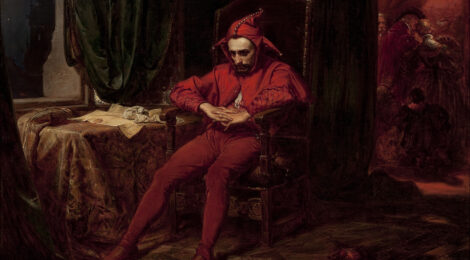
Who am I, When I’m Not Performing
Jan Matejko’s 1862 painting Stańczyk offers an exploration of what it means to have high functioning depression. In solitary the figure of a jester. Traditionally it symbolise a person of high spirits, charming, or witty. Jesters are expected to entertain, to lighten the mood. However, Matejko unsettles this expectation by portraying Stańczyk in a moment of deep introspection, sorrow, or what looks like he is ruminating. Seated on his own in a room with close to no light.
His posture is as undercurved as his frown slumped inward. Stańczyk is isolated from a ball (the jubilant ball) happening in the background. The illustration underscores the theme of what many might call the Sad Clown Paradox, where those who bring joy to others often conceal their own suffering.
Matejko’s illustration evokes a familiar pattern we often see in individuals living with depression or low mood. People who appear personable, charming, or light-spirited on the outside may, beneath the surface, experience profound feelings of loneliness, isolation, and despair. It can be difficult for others to recognize that someone who seems outwardly joyful may simultaneously be struggling internally, feeling “in the dark,” and managing the heavy burden of keeping up with appearances.
The discarded marotte the jester’s scepter, now lying on the ground symbolizes Stańczyk’s inner resignation, a quiet decision to stop performing. Beside him rests a letter, anchoring his sorrow to the real-world event where those around him seem too busy to acknowledge. Through the window, a comet cuts across the night sky, an omen of misfortune that deepens the sense of impending doom and captures the loneliness of what it means to be “in the dark.”
Matejko’s decision to model Stańczyk’s face after his own, offers a bit of vulnerability, connection to whomever is experiencing such feelings of invisible suffering. Telling the audience that although personal. Feelings of loneliness, needing to perform, and a low mood are felt universally.
Image Credits:
Featured Image: Jan Matejko on WikiMedia



